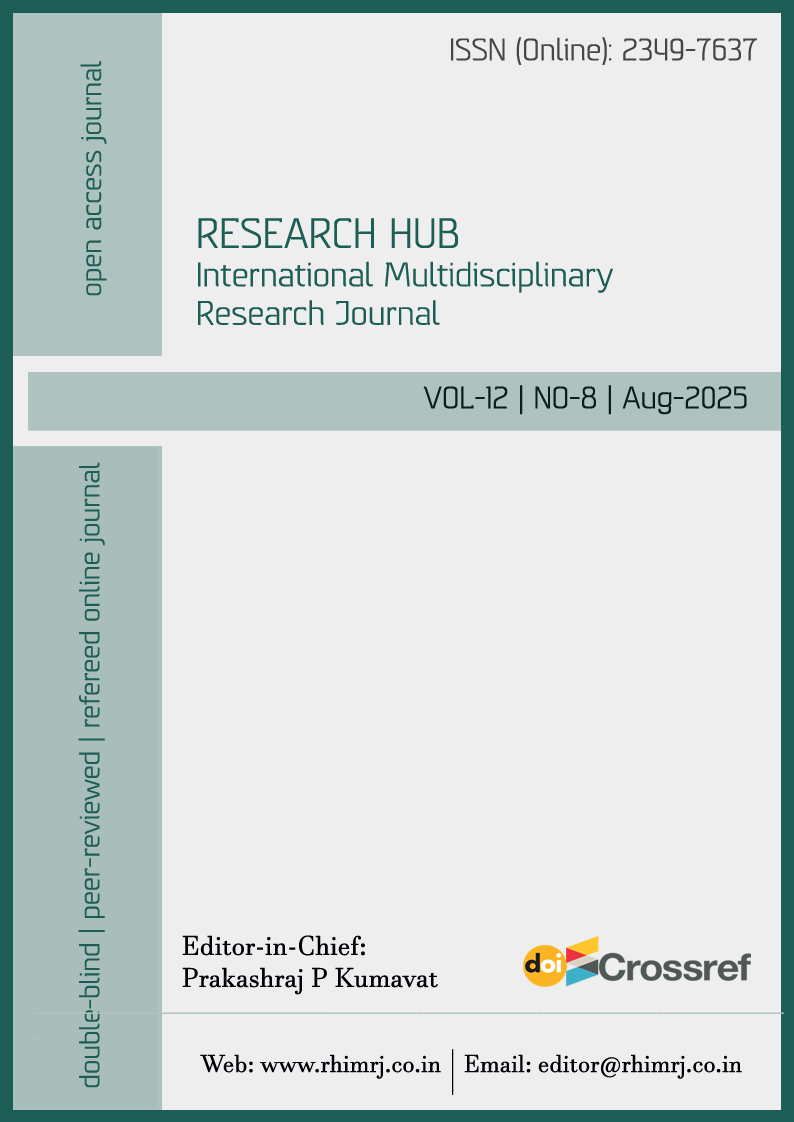Advaita Vedānta and Buddhist Ethics: Convergences and Divergences
DOI:
https://doi.org/10.53573/rhimrj.2025.v12n8.012Keywords:
Advaita Vedānta, Buddhist ethics, non-duality, dependent origination, ahiṃsā, karuṇāAbstract
This paper rigorously analyzes the ethical frameworks of Advaita Vedānta and Buddhism, emphasizing their similarities and differences to highlight their philosophical profundity and modern relevance. Both religions are dedicated to the elimination of ignorance (avidyā) and the mitigation of suffering, establishing moral existence on the principles of compassion (karuṇā), non-violence (ahiṃsā), and rigorous self-discipline. Advaita Vedānta grounds ethics in the comprehension of non-dual Brahman, positing that all entities are expressions of the singular ultimate reality, whereas Buddhist ethics highlights the principle of dependent origination (pratītyasamutpāda) and the development of virtuous intentions to transcend the cycle of suffering (saṃsāra). This comparative analysis elucidates the ways in which Advaita’s philosophical universalism and Buddhism’s pragmatic, process-oriented moral psychology both complement and contest each other. Their conversation enhances comprehension of ethical responsibility that is both ontologically based and action-focused, providing valuable insights for tackling modern challenges such as ecological crises, social inequity, and moral disintegration. This study contends that the intersections and tensions between Advaita Vedānta and Buddhist ethics offer a persuasive framework for moral change, integrating inner realization with external compassion, and is essential for developing a globally pertinent ethical dialogue.
References
Bodhi, B. (Trans.). (2000). The connected discourses of the Buddha: A new translation of the Saṃyutta Nikāya. Wisdom Publications.
Deutsch, E. (1980). Advaita Vedānta: A philosophical reconstruction. University of Hawai’i Press.
Garfield, J. L. (1995). The fundamental wisdom of the middle way: Nāgārjuna’s Mūlamadhyamakakārikā (J. L. Garfield, Trans.). Oxford University Press. (Translation and commentary on Nāgārjuna.)
Garfield, J. L. (2015). Engaging Buddhism: Why it matters to philosophy. Oxford University Press.
Gombrich, R. F. (2009). What the Buddha thought. Equinox.
Khoury, B., Lecomte, T., Fortin, G., Masse, M., Therien, P., Bouchard, V., Chapleau, M.-A., Paquin, K., & Hofmann, S. G. (2013). Mindfulness-based therapy: A comprehensive meta-analysis. Clinical Psychology Review, 33(6), 763–771.
Keown, D. (1992). The nature of Buddhist ethics. Palgrave Macmillan.
King, R. (1995). Early Advaita Vedānta and Buddhism: The Mahāyāna context of the Gauḍapādīya-kārikā. State University of New York Press.
Lim, H. L. (2019). Environmental revolution in contemporary Buddhism. Religions, 10(2), 120.
Nāgārjuna. (1995). The fundamental wisdom of the middle way: Nāgārjuna’s Mūlamadhyamakakārikā (J. L. Garfield, Trans.). Oxford University Press.
Radhakrishnan, S. (1953). The principal Upanishads. George Allen & Unwin.
Rambachan, A. (2006). The Advaita worldview: God, world, and humanity. State University of New York Press.
Śaṅkara. (1992). A thousand teachings: The Upadeśasāhasrī of Śaṅkara (S. R. Mayeda, Trans.). State University of New York Press.
Śāntideva. (1995). The Bodhicaryāvatāra (K. Crosby & A. Skilton, Trans.). Oxford University Press.
Thakchoe, S. (2011). The theory of two truths in India. Stanford Encyclopedia of Philosophy.
Zhang, D., Jiang, H., Xie, Z., & others. (2021). Mindfulness-based interventions: An overall review. Frontiers.



